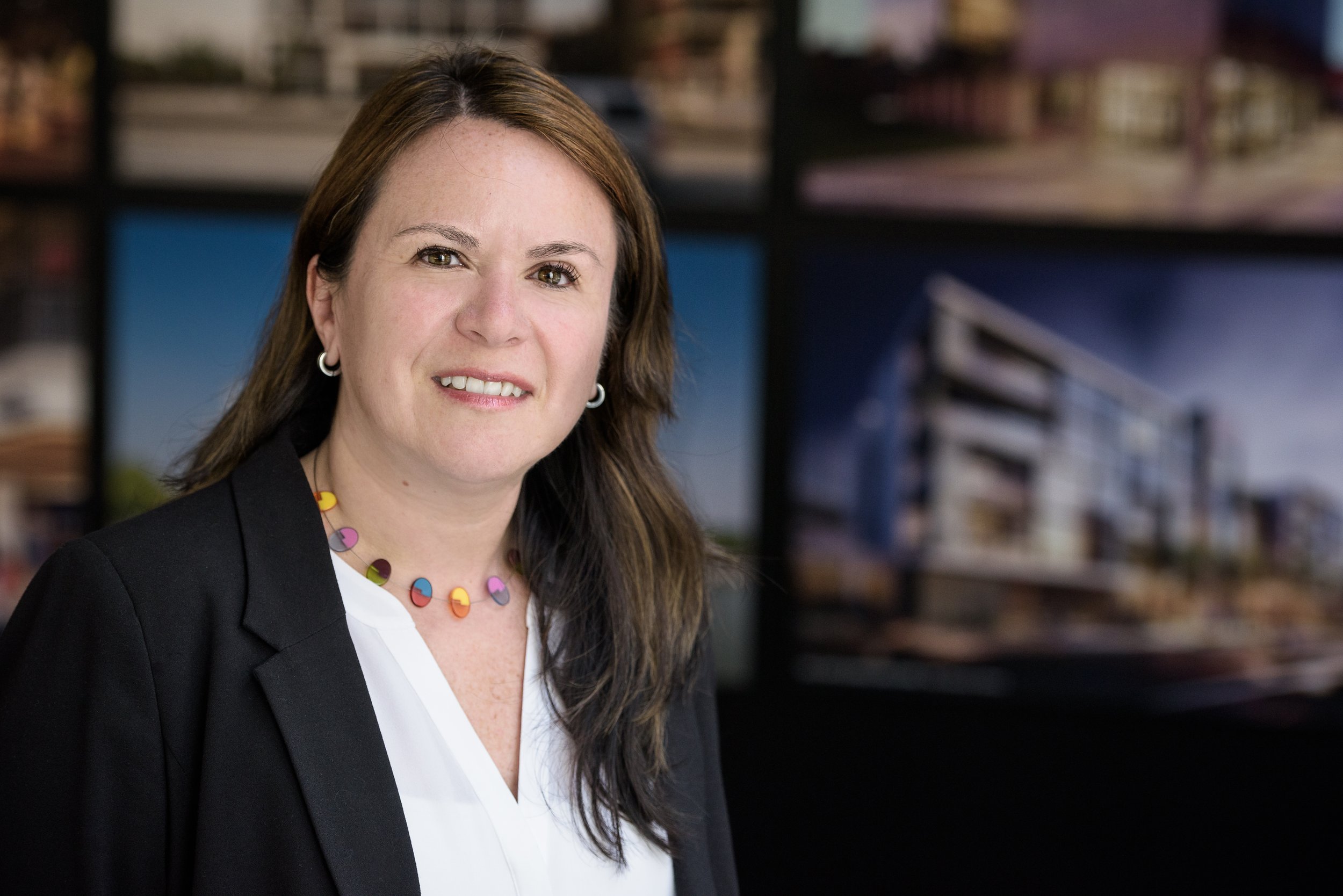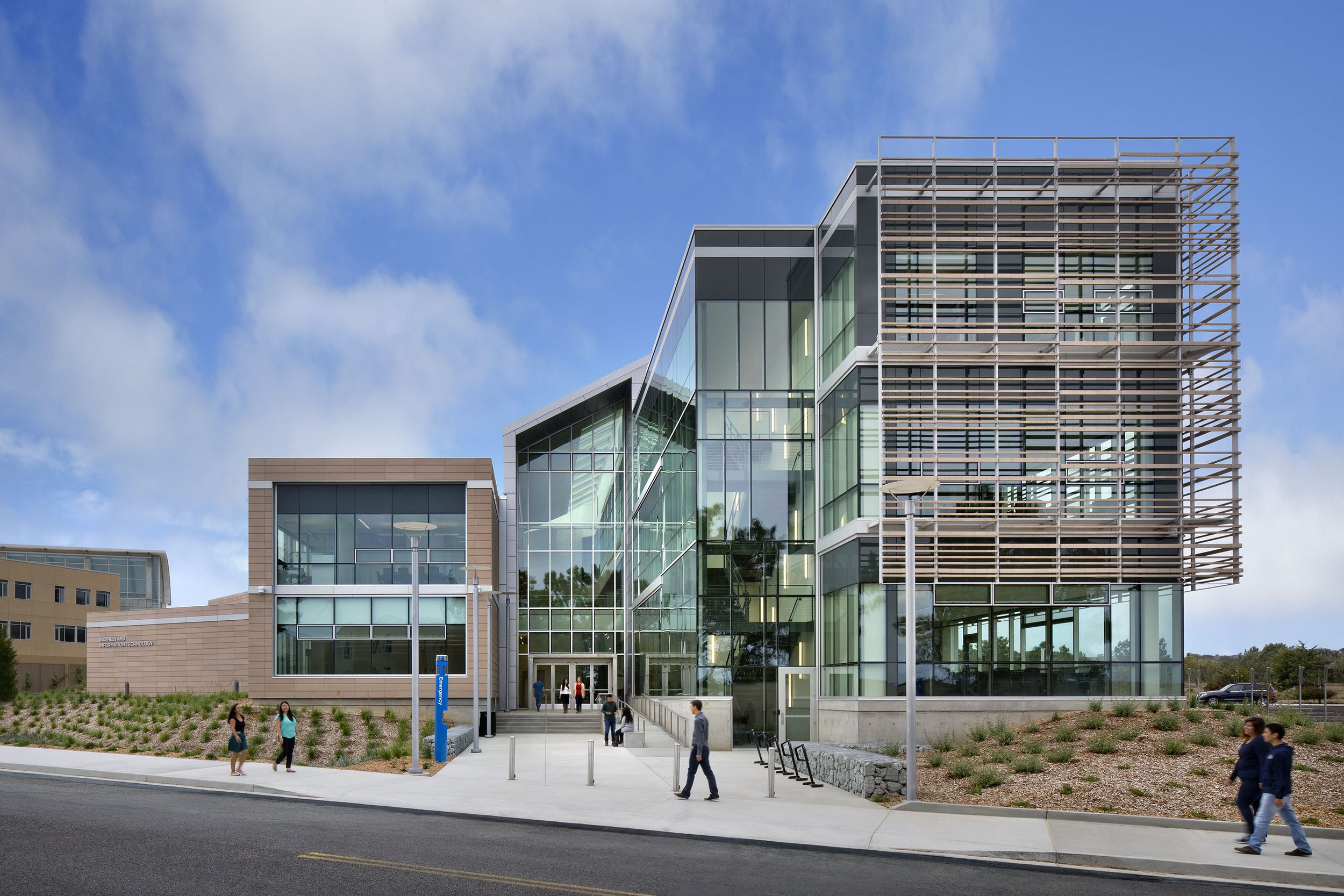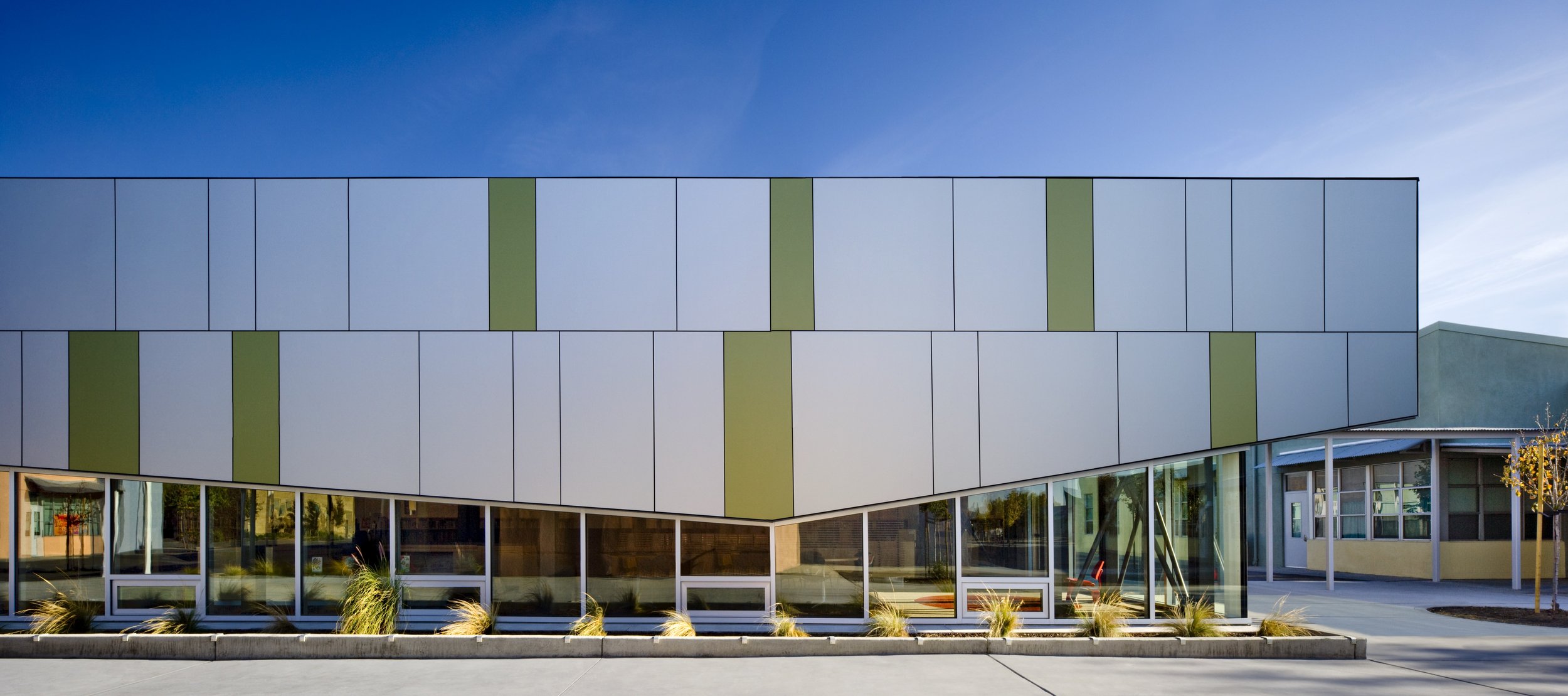Care in Differences: Steinberg Hart's Katia McClain on Defining Experiences, Interpreting Policies, and Trusting Her Gut
As Partner at Steinberg Hart, Katia fuses her expertise leading complex, innovative, and highly sustainable projects with her passion for championing an inclusive, people-focused culture across the firm. Over the last three decades, Katia has worked to create powerful environments that have a positive impact on the diverse communities they serve.
She serves on the Board of the San Jose Downtown Association, the Board of the Hispanic Foundation of Silicon Valley, and is a founding member of AIA Silicon Valley’s Women in Architecture Committee. Born in Mexico City, Katia is a proud binational and bicultural architect. In her interview, Katia talks about how her hometown and the other places she lived and practiced in have shaped her approach, advising those just starting their career to care about the people around them.
JG: Tell me about your foundational years - where did you grow up and what did you like to do as a kid?
KM: I grew up in Mexico City, a place that is a fusion of disparate cultures that have coexisted, sometimes successfully and other times with conflict. When I grew up there, the City was 10 million people — now the population is 22 million — but I always felt that I was never more than 3 degrees removed from others.
Personal space is limited, by choice and by nature of the magnitude of the city. The influences of a large cosmopolitan city on me as a kid translated to a diverse and busy schedule; I was always doing something: art and music classes, ballet folklorico, English or French or Italian classes, in addition to synchronized swimming training in the mornings. I loved learning from others and I slept — and still do — like a baby everyday with all these activities.
CSUMB Joel and Dena Gambord Business and Information Technology Building. Courtesy of HMC Architects and photography by David Wakely.
What did you learn about yourself in studying architecture?
I went to undergraduate architecture school in Mexico. In our design studios, we had “repentinas” — you can translate that to “sudden” or “fast” projects — with typically only eight to twelve hours to complete a design project. With these fast projects, you don’t have a lot of time to analyze all the possible options. Your friends sitting around you become your best and toughest critics, with direct and quick reactions needed to make real progress. I learned to take feedback as a positive way to improve, that I could trust my gut, that I was good at approaching new challenges with a creative mind, and that I like this idea of a decision-making process that was informed, rooted in my values, but also full of possibilities.
How did you get your start in working with the built environment?
I started working in architecture in my second year of school. After finishing my fifth year (Architecture school in Mexico takes at least 5 years to complete), I needed a break and I went and traveled the world. Leaving home to wander the world was not really common in the 90s and certainly, not for a woman living in a traditional Catholic family in Mexico. However, living in different places in Europe helped me to understand and appreciate different architecture styles, how context is approached differently in a variety of cultures, and I fell in love with the built environment again after understanding the real impact it has on people’s lives.
“I understood the interconnection between policy and the way people live. Architecture really has the power and potential to be a direct interpretation of those policies and mold the way people interact, both with each other and with the city as a living organism.”
Tell me how your work evolved, and you with it.
The places I’ve lived have shaped the way I function as an architect and how I approach various design problems from different perspectives. While working in school, I worked on commercial TIs, with a lot of TI work at the National University. Interior architecture was a typical assignment for a woman architect in Mexico at that time, and I never questioned my role on those projects. My designs were rich in texture and it was definitely a time of exploration of interior materials. Drafting by hand made me especially interested in how those materials come together and the craftsmanship behind them.
My travels throughout Europe in the 90s solidified my notion of the importance of urban anchors, which had been designed in Mexico for decades, but had resurfaced in Europe by then. It also opened my eyes to a Postmodern world and the ambiguity and possibilities available for existing forms, thanks to the use of new drafting technologies that had not been widely available before.
Going back to Mexico was a hard reality to face; new technologies were in full force and I had gone through school without an email account! While I was building my proficiency in these new technologies, one of my first jobs after coming back to Mexico was in the Riviera Maya, working on low-income housing management and policy and shaping the infrastructure of what is now a well-known international tourist destination. I think this is where my work really started to shape the architect I am now, because I understood the interconnection between policy and the way people live. Architecture really has the power and potential to be a direct interpretation of those policies and mold the way people interact, both with each other and with the city as a living organism.
I then moved to the US in the late 90s, and I quickly gravitated towards civic and public architecture: buildings and spaces that impact more than one family at a time, with a diverse group of users, deeply rooted in policy, and with a long lasting presence in a city.
Orchard Library. Courtesy of HMC Architects and photography by David Wakely.
Where are you in your career today? What is on your mind most at the moment?
Most of my work continues to focus on bringing diverse perspectives to a consensus around the creation of one building. I am often deeply interested in the development of details and how the materials of buildings come together: what are you going to be able to touch and feel when you go inside of a building. I am very interested in how buildings contribute to a richer experience on a higher education campus or in a city. Buildings are able to evolve and change and I believe in treating them as living organisms that interact with and are part of a larger whole.
Looking back at it all, what have been the biggest challenges? How did you manage through a disappointment or a perceived setback?
Two big challenges: the first one was and still is, being a Latina female architect. Only 1% of licensed architects are Latinas, so we still have a long way to go to be trusted as leaders in creativity and practice. Just recently, I was talking to a group of people and I remembered how at the beginning of my career in the US, I wanted so badly to get rid of my accent. It was only a few years back that I started to embrace having an accent. Today, I see it as a sort of ‘superpower’; it allows me to remember where I am from, provides recognition of my to others, and serves as a reminder to others that our differences make us stronger.
The second challenge has been, and still is, bringing people together and honoring different values for a building’s design in a society that is polarized more than ever. Creating opportunities for difference is the base of a framework of a more diverse and equitable design execution, but it comes with inherent conflict that we need to be comfortable with.
“Care about the people around you. They can be your family, your friends, your co-workers, or the users of a building. As an architect, you will define the spaces they use, so if you care about how they experience those spaces, you will understand the best way to design for them and not for you or the form.”
What are you most excited about right now?
I am very excited about the changes taking place in my city of San Jose, California. Large developers and tech companies are seeing the potential of the city: its fantastic connectivity with the rest of the Bay and the Nation, the richness in culture of its inhabitants, and the potential for growth rooted in the innovative spirit of the region. I am fortunate to lead the local team of a firm that started in San Jose almost 70 years ago and that continues to change and be part of the evolution of a place full of creativity.
Who are you admiring now and why?
While I haven’t lived in Mexico for more than two decades, I admire the women of Mexico and Latin America for standing up and fighting for the right to be a woman. One woman is killed every two hours in Latin America and they are raising their voices, not for better pay, or better jobs, but simply for the right to stay alive. This statistic makes me sad, but at the same time very proud of those who are finally saying enough is enough. I speak a lot about being a Latina female architect and the importance of lifting each other in the profession, but this is a fight for the basic nature of human life.
San Jose City College, Career Education Building. Courtesy of Steinberg Hart.
What is the impact you’d like to have in the world? What is your core mission? And, what does success in that look like to you?
My core mission is to be remembered. To be remembered because I am a space creator through great architecture. Because I am a leader in the profession making a positive impact on the built environment. To be remembered because I was able to open the doors for new young Latina architects to be considered as great designers and successful leaders.
Finally, what advice do you have for those starting their career? Would your advice be any different for women?
Care about the people around you. They can be your family, your friends, your co-workers, or the users of a building. As an architect, you will define the spaces they use, so if you care about how they experience those spaces, you will understand the best way to design for them and not for you or the form. The advice has a slightly different emphasis for women: I would tell women: care about the people around you, but care about yourself as well. Don’t forget about your dreams and your passion along the way, and do not care about those that don’t believe in you.



